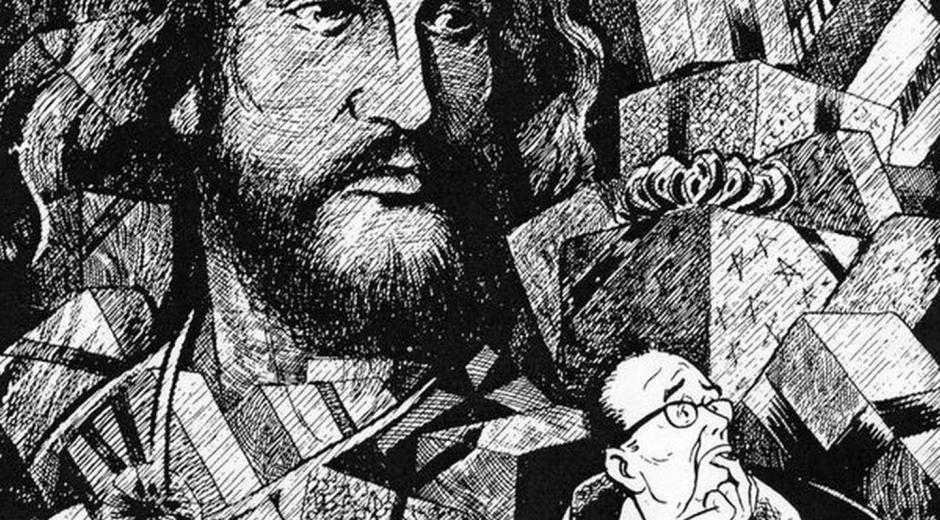
Hugh Haynie And Christmas Tradition In Louisville

Thomas McAdam
iLocalNews Louisville is your best source of news and information about Derby City.
- Professional Journalist
For over half a century now, every Christmas Eve the Louisville Courier-Journal runs the same cartoon on its editorial page. Since it first appeared on December 24, 1961, it has become the newspaper’s most popular cartoon, and has been published around the world on Christmas cards, in church bulletins and more. It pictures a man surrounded by wrapped presents, with an image of Christ behind him, contemplating his holiday shopping list and asking, "Now, let's see, have I forgotten anyone?" It was drawn by the late Hugh Haynie, one of America’s preeminent cartoonists. And he was my friend.
My dad introduced me to Hugh back in 1961, while I was still in high school. My father helped Hugh with his income taxes each year, and they became fast friends. I tried to call him “Mr. Haynie,” but he insisted everyone call him “Hugh.” With his Old Dominion graciousness and Tidewater accent (he’d say “oot” for “out,” and “aboot” for “about”), he made friends easily in his adopted city of Louisville.
Hugh came to Louisville in 1958, when he was hired by Barry Bingham, Sr., to serve as political cartoonist for the Courier-Journal; a job he held for 38 years. He would always hide his wife’s name somewhere in his cartoons, and the daily hunt for “Lois” became a major indoor sport for literate Louisvillians. The day after the moon landing, in a rush to get his cartoon to the presses, Hugh inadvertently omitted Lois from his drawing, and the newspaper was deluged with phone calls the next day, with readers inquiring after the health of Mrs. Haynie.
Back in the 1960’s—certainly a more innocent time—a fellow could just walk in the front door of the Courier-Journal, past the ten-foot hanging globe and those wonderful WPA-esque Harold Weston murals Adele Brandeis got old Barry to install in the lobby, get on the elevator, and go up to the editorial offices. I soon learned not to drop in on Hugh right before his 3:30 deadline for getting his drawings down to the press room. He was a perfectionist, and was always making little changes to his cartoons, right up to the last minute.
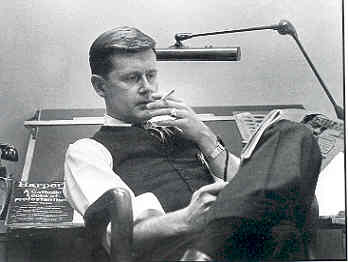
Hugh drew his cartoons on large cardboard mat boards, and the finished product more often than not resembled a collage of pasted-up parts. There were halftone shading strips glued on for emphasis, and much white paint covering the changes of direction Hugh’s artistic genius made. One April 15th, he pasted an IRS Form 1040 as a background, and drew a poor little taxpayer, dressed only in a wooden rain-barrel. The autographed original, which he dedicated to my dad, now hangs in my office.
While Haynie originals often looked as if they were assembled in a hurry by a slightly insane dadaist, the photo-reduced version ending up in print usually looked like an Albrecht Durer drypoint engraving. In fact, one of Hugh’s most famous works was a rendition of Durer’s “praying hands,” with appropriate acknowledgment to the great German artist included at the bottom of the cartoon.
Hugh and Lois and little Hugh, Jr. (who is now a distinguished Jefferson Family Court judge), lived in a big house over in Indian Hills, and he was the first person I ever met who had a custom stereo outfit, made of matched components and high performance speakers. How I secretly lusted after that stereo: I was lucky to have my little RCA 45-rpm spindle, hot-wired into my old radio. Well, one Saturday, Hugh called me up and asked me to come over and help him hook up his “new” stereo deck. We shared a love for good music, but electronics was not exactly Hugh’s métier. Mine either, for that matter; but I knew how to fake it.
We finally got the new outfit working, and it was powerful enough to rattle the neighbors’ windows (the standard measure of perfection at the time). The old tuner, preamp and amplifier were sitting in the center of the room, and I asked Hugh where he wanted me to put them. “In your car,” he replied. Be still my heart: I now had my very own, gently used, pre-owned stereo outfit. It lasted me from Wagner and Mozart to Peter Paul & Mary and the Rolling Stones.
As we were loading Hugh’s largesse into my old car, he noticed my bumper-sticker, reading “ABC in ’63.” I was a Democrat precinct captain, and a strong supporter of A.B. “Happy” Chandler in the 1963 primary election for Governor. Happy had been governor back in the 1940’s, then Senator, and even Baseball Commissioner. He was the grandfather and namesake of Kentucky’s former U.S. Representative Albert "Ben" Chandler.
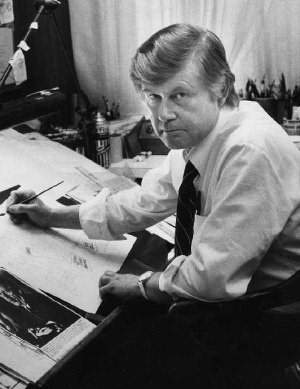
Hugh was a red-head, so when his face got red, it really got red. “Are you out of your mind?” he asked me. He then sat me down and gave me the best lecture on Kentucky politics I’ve ever had; before or since. He differentiated between the Earle Clements / Harry Lee Waterfield / Happy Chandler wing of the Kentucky Democratic party and that of Bert Combs and Edward T. “Ned” Breathitt, Jr. The positions of these two groups on issues such as education, development, and civil rights were further apart than I had imagined. How a transplant from Virginia got to know so much about Kentucky politics amazed me, then and now.
Inside of an hour I became a rabid Net Breathitt supporter. Ned was Governor Combs’ Personnel Commissioner, and his hand-picked successor. Hugh saw to it that I was introduced to Ned (wouldn’t let anyone call him “Mr. Breathitt”), and I became one of his volunteers. I’m not saying my support swung the election for Ned (he beat Happy in the primary and Louie Nunn in the 1963 general election), but Hugh and me together were a force to be reckoned with. I’m just saying...
To the victors the spoils: Governor Breathitt appointed me a Kentucky Colonel (laugh if you must; I still think it’s a big deal), and invited me to breakfast at the Governor’s mansion. Like it was yesterday, I recall the white linen tablecloth and the china that matched (both unheard of in the neighborhood from whence I hailed). At one point, Frances Breathitt got up, walked over to the sideboard, and, without a word, refilled my coffee cup from a silver pot. Sure, they had servants, but Ned and Francis were just plain folks from Hopkinsville. Here I am, a 20 year-old kid from Parkland, in the bowels of Louisville’s West End, having my coffee warmed up by the First Lady of the Commonwealth. Pretty heady stuff; and I have Hugh Haynie to thank for it.
The last time I saw Ned, he was at some political cocktail party, and just happened to be standing there talking to Hugh. Ned was out of politics, and had landed the dream job of V.P. and special counsel for the Southern Railway. His job required him to be a “roving ambassador” for the railroad, and to ride around the country in his private rail car. You know, the kind with overstuffed leather chairs, bedroom, kitchen, and the works. It even came with a butler and a chef. He was trying to convince Hugh to quit cartooning and accompany him on a grand tour. I don’t know if they ever managed to pull it off, but I do know Ned and Hugh remained close buddies for the rest of their lives.
In the fall of 1963, I became editor of my college newspaper, The Bellarmine Concord. We needed an editorial cartoonist, but couldn’t find any student with the requisite skills (like getting along with the editor). With all the hubris of youth, I stopped by Hugh’s office at the C-J and offered him the job. He claimed to be flattered, but allowed as how his salary at the newspaper (Dad would never tell me what it was) was considerably higher than what the Bellarmine Concord offered (none), and that he really couldn’t serve two masters (me and Barry Bingham).
As a compromise, Hugh agreed to let me reprint any of his cartoons I wanted in my school paper. This was in the days before syndicates and their lawyers needed to be consulted for such an arrangement. He agreed to be my cartoonist, and I put his name in the Concord’s masthead. For an entire year, Bellarmine College had the services of the world’s greatest cartoonist for its student newspaper.
The only problem was, it cost us thirty bucks to make a photo cut of an editorial cartoon for the old flatbed presses we used to publish the Concord. That was about a third of our budget for each issue, and meant we would have to cut back on basketball photos, and would thus alienate most of our readers. (I never fooled myself that Bellarmine students picked up a copy of the Concord to read my editorials.)
No problem. Hugh gave me a large box full of the original zinc plates used by the Courier-Journal to print his cartoons. The plates were used to run off proofs of the cartoons, and then used to make curved Papier-mâché mats, from which the giant rotogravure plates were made. We just glued one-inch wooden blocks to the back of the zinc plates and fitted them into our letterpress chase to print the Concord’s editorial cartoons.
One of the zinc plates Hugh gave me was his 1961 Christmas cartoon, and I ran it in the December 11, 1963 issue of The Bellarmine Concord. That was the issue with the Haynie cartoon of JFK on the front page, superimposed over an American flag at half mast. Most of the stories that week were about the assassination.
Interestingly, Hugh had drawn an earlier version of his famous Christmas cartoon for one of his previous employers, The Greensboro Daily News, but his editor thought it was too sentimental. So much for editorial judgment.
A couple of years ago, the Frazier Museum displayed a retrospective exhibit of Hugh Haynie’s works. At the opening dedication, Hon. Hugh Smith Haynie was the guest of honor, and I had the great honor and privilege to present Judge Haynie with his father’s original zinc plate of the Christmas cartoon. It had rested on my desk for the past 40 years or so, and now has been passed on to the artist’s son, to remain in the family for future generations. I think Hugh would have approved.
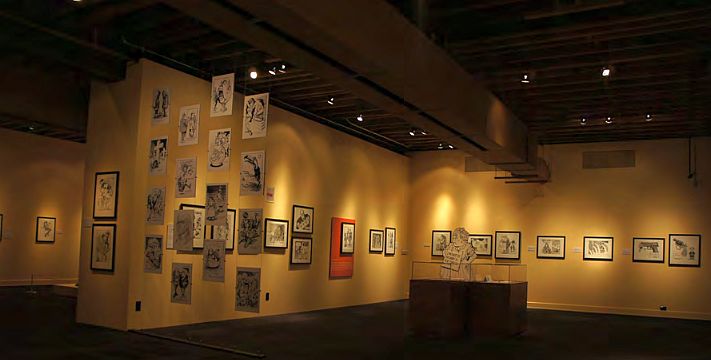
I will accept second-place to no one in my criticism of the Courier-Journal, but their decision to run Hugh’s Christmas cartoon every year as an homage to that great soul is an act of tenderness befitting a great newspaper. And as long as they do so, I will never cancel my subscription. Bet a lot of their readers feel the same way.
So, this Christmas Eve, as I have for the past five decades, I will look forward to going out onto my front porch and retrieving the good ol’ C-J; and when I find Hugh’s cartoon right were it’s supposed to be, a warm glow of nostalgia will defeat the winter’s chill. Once again, I’ll remember Hugh Haynie, and how I miss him. He was my friend. And he was my cartoonist.
Read more: Hugh Haynie’s obituary in the New York Times
Read more: Collection of Haynie cartoons at College of William and Mary
Watch the video: KET streaming video – Remembering Hugh Haynie
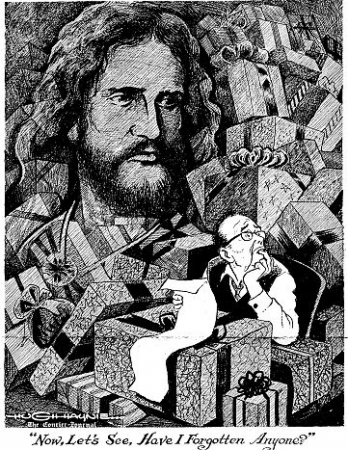
The famous Hugh Haynie Christmas cartoon; run in The Bellarmine Concord on December 11, 1963, by permission of the artist. Later copyrighted by The Courier-Journal. Printed from original zinc plate, a gift from the artist to the author.